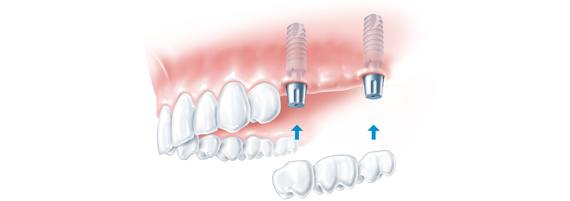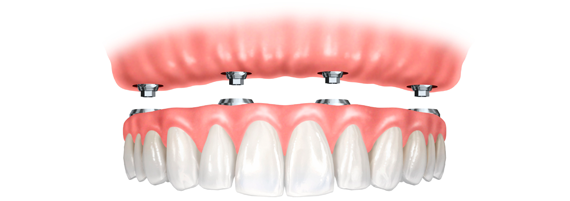Crowns - Restoring Damaged Teeth
If your tooth is damaged but not lost, a crown can be used to restore its shape, appearance and function. You may need a crown if you have a root canal, a large filling in a tooth or a broken tooth.



A crown, also called a cap, is a hollow, artificial tooth used to cover a damaged or decayed tooth. The crown restores the tooth and protects it from further damage. Crowns can also be used to cover a discoloured or misshapen tooth. A tooth that has been fixed with a crown looks and works very much like a natural tooth.
How a crown is done
- Dentist gives you a local anesthetic.
- To make room for the crown, your dentist files down the tooth that needs to be restored.
- An impression of the filed-down tooth and nearby teeth is taken. This impression is used to custom make your final crown. The crown is built using restorative material (material used for fillings) based on the impression. The final crown will be the right shape for your mouth.
- Until your final crown is ready, your dentist places a temporary crown over the tooth that needs to be restored. The temporary crown is made from an impression of your tooth before it was filed down. It protects your tooth until the final crown is ready. A temporary crown may not have the same shape and colour as a final crown.
- On your next visit, your dentist takes off the temporary crown and puts on the final one. Your dentist checks to make sure the crown is the right fit, shape, colour and bite. If it is, your dentist cements the crown into place.
Bridges
A bridge, also called a “fixed bridge” or a “fixed dental prosthesis,” is a dental restoration that replaces one or more missing teeth. It extends across an area that has no teeth and is typically made up of an artificial tooth fused between 2 crowns. (A crown is a hollow, artificial tooth that fits over a natural tooth or a dental implant). The bridge is held firmly in place by your own teeth on each side of the missing one(s) or by dental implants. A bridge is permanent and cannot be removed.
Caring for your bridge
If you take good care of your bridge, it should generally last for about 10 years, or perhaps longer. Like natural teeth, bridges need to be brushed and flossed every day. Your dentist will show you how to use a floss threader to floss under and around the artificial tooth (or teeth) in the middle of the bridge. Regular dental visits and professional cleanings are also important. If you have an implant bridge, your dentist will show you how to properly care for them.
Dentures
Dentures are artificial replacements for your natural teeth and gums. If an accident, a disease or poor oral health care has left you with only a few healthy teeth or none at all, your dentist or prosthodontist might suggest dentures to replace your missing teeth. There are 2 types of dentures: partial and complete. For both types of dentures your dentist or specialist makes a model of your teeth by taking impressions. The models are used to custom-make your dentures.
Types of Dentures
Partial dentures are also called “removable partial denture prostheses” or “partials.” They may be used when nearby teeth are not strong enough to hold a bridge, or when more than just a few teeth are missing. Partial dentures are made up of one or more artificial teeth held in place by clasps that fit onto nearby natural teeth. You can take the partial denture out yourself, for cleaning and at night.
Complete dentures are what we most often refer to as “false teeth.” They are also called “full dentures” and are used when all your natural teeth are missing. Complete dentures are removable as they are held in place by suction. They can cause soreness at first and take some time to get used to. There are 2 types of complete dentures: immediate dentures and conventional dentures.
